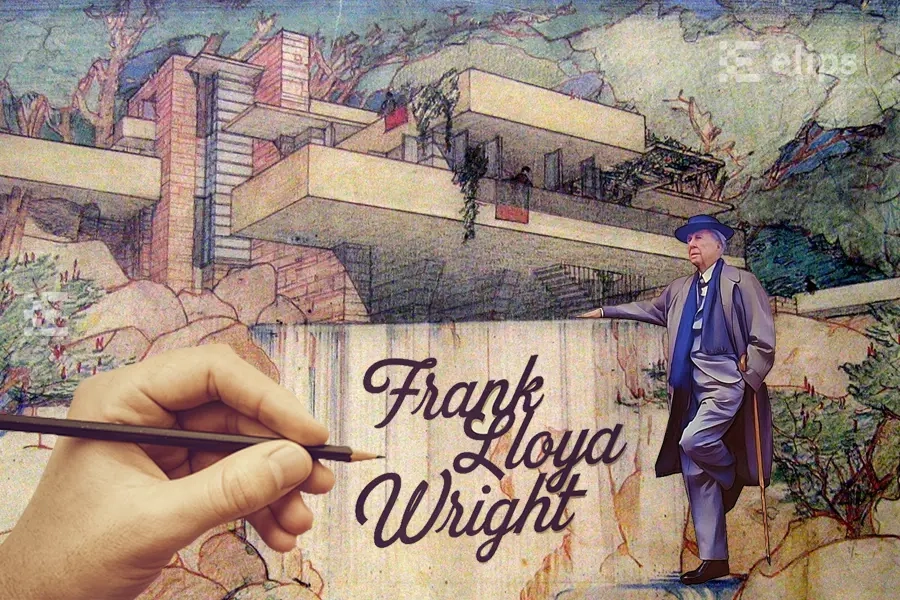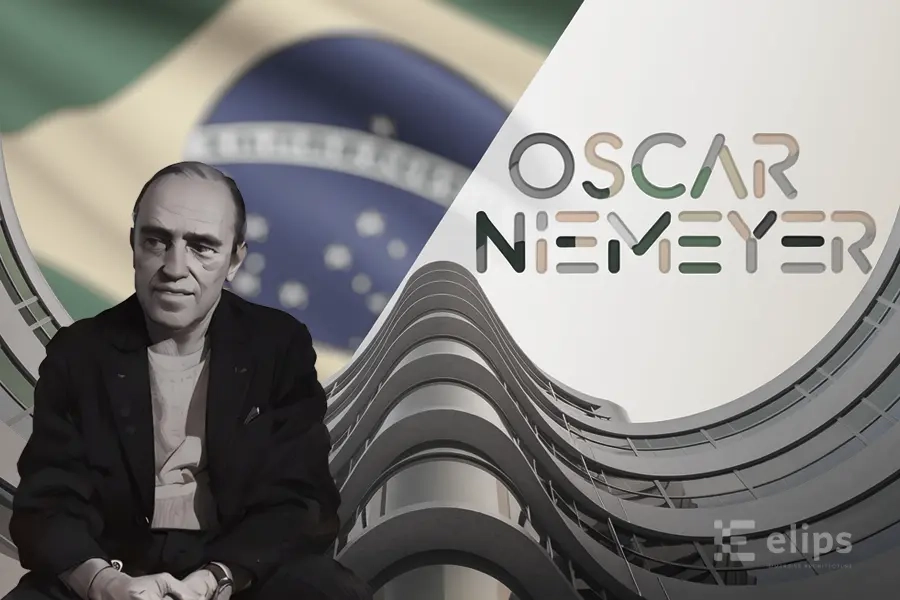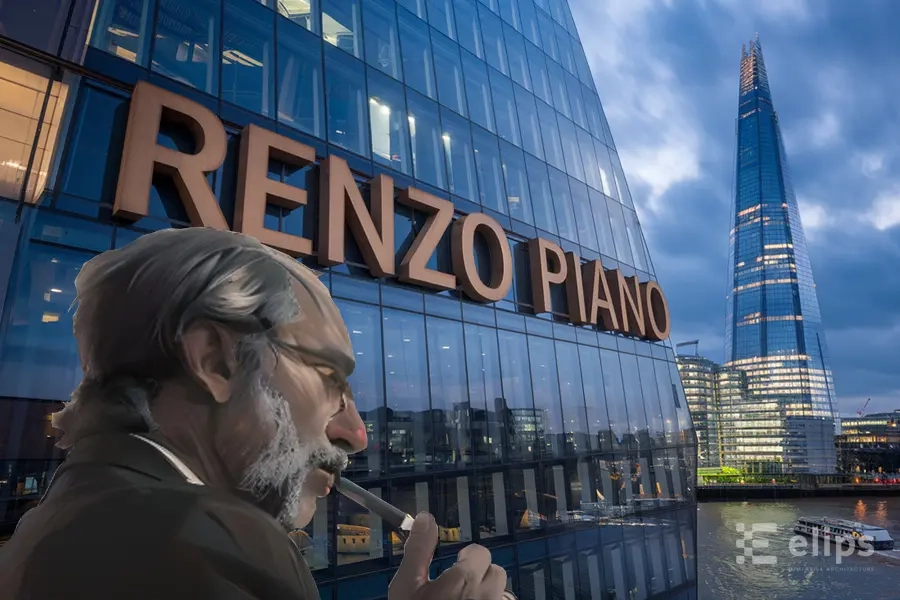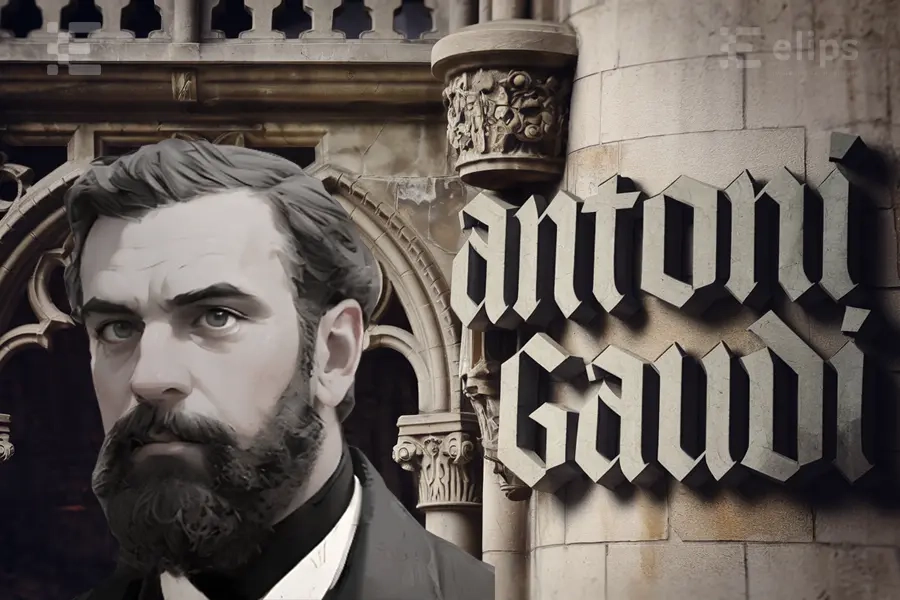No products in the cart.
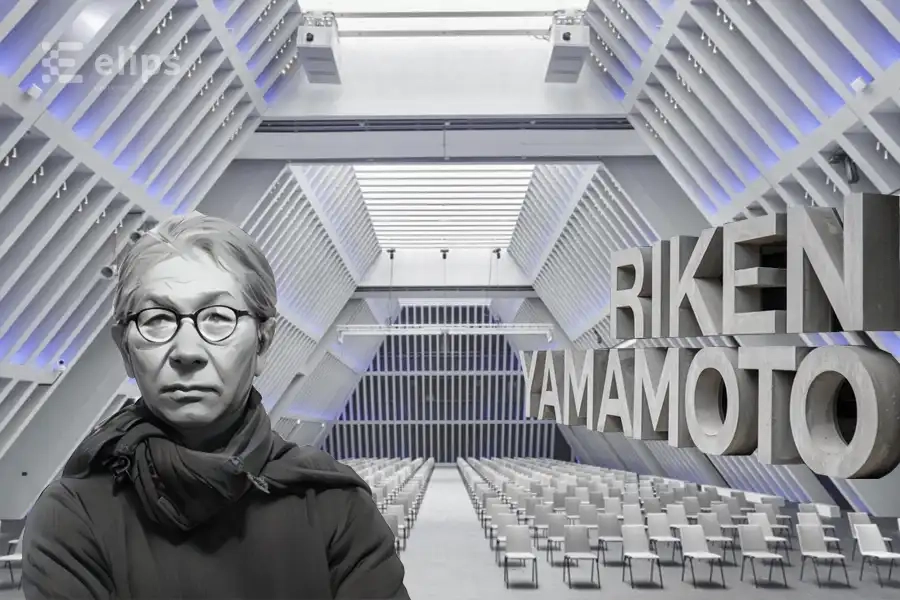
Riken Yamamoto, the architect of social interaction
Born in 1945, architect Riken Yamamoto has designed spaces that encourage social interaction while respecting individual privacy.
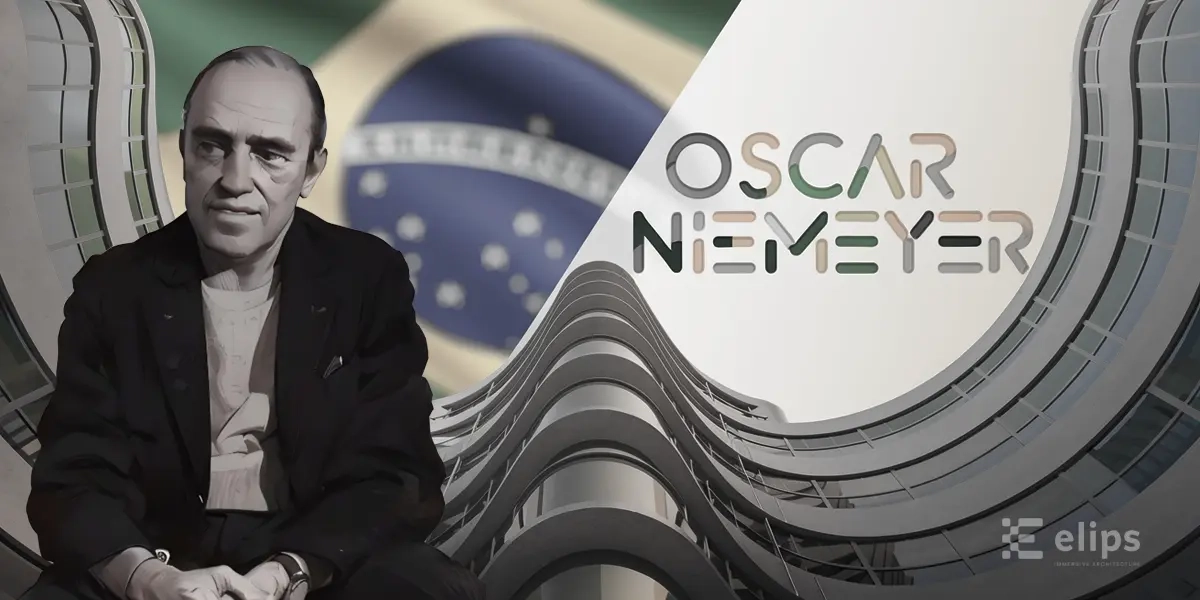
On December 15, 1907, a young boy showed up at the Brazilwith a spicy cocktail of German, Portuguese and Arab blood running through his veins. He comes straight from Rio de JaneiroIn this city where families have names as long as a Carioca summer, his will mark the history of this country: Oscar Ribeiro de Almeida Niemeyer Soares Filho.
Oscar didn't exactly get off to a rocky start. The son of a well-established bourgeois family, Dad was a scholar and an engineer, with a pocketful of inheritance, he already had an avenue named after his grandfather before he'd even done anything.
But it was in his blood, the boy. Not fortune, no, he left that to his family. Young Niemeyer spent all his time drawing at school, and in art classes, he didn't do things by halves: always 20 out of 20. Except that, well, for the rest, the young man wasn't very academic, let's face it. At 21, he said "yes" to Annita Baldoa penniless family with a heart as full as a windy sail. Their only daughter was born of this union, Anna Maria Niemeyerin 1929.
His father hired him in the family printing business, then fired him for drawing portraits on the account books.
That same year, Il s'en va gratter des plans à Escola Nacional de Belas Artes. He graduated in 1934 and in 1936 joined the old Lúcio Costaanother with ideas that weren't quite normal for the time.
And then the story really begins. The Brazilian pavilion at the 1939 New York World's Fair. Bam. You start to hear that name rolling in like a wave, Niemeyer.
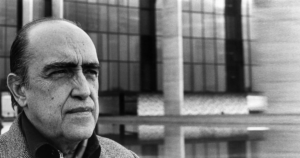
Architect Oscar Niemeyer
It's in Lúcio Costa that he could take part in the project that marked the advent of modernism in his country: the construction of the Ministry of Education and Health from 1936, including Le Corbusier is a consulting architect. At some point, he meets the Swiss architect who likes everything to be square, tidy and functional. Le Corbu likes straight lines and angles. And then there's Oscar, who dreams of curves and movement. He swings for Le Corbusier something like, "Hey, it's the curves of mountains, rivers and women's bodies that speak to me." Le CorbusierHe must have choked on his coffee, but he admitted it: what Oscar was doing was baroque, but it was damn well done.
Nevertheless, Niemeyer admired the work of Le Corbusier whom he considered his "master".
In 1943, Niemeyer achieved his first breakthrough with Saint Francis of Assisi Church, Belo Horizontecommonly known as Igreja de Pampulha" . This work, one of the first in the modern style in Brazil, was commissioned by the city's mayor. Juscelino KubitschekIts bold use of curves and organic forms is already the hallmark of its architectural signature.
The curve for NiemeyerIt's not just a fantasy. It's art, it's sentiment, it's a nose-thumbing at the rigidity of norms.
In 1951, he gave life to the Casa das Canoasan architectural jewel that would become the emblem of modern Brazilian architecture. Perched on the verdant heights of Rio de JaneiroThis house, conceived as his own family refuge, seems to melt into the landscape. Like a dialogue between man and nature, he sculpts his work respecting the topography of the land, skirting the rocks and embracing the lush vegetation that surrounds it. The architect's signature curved, flowing lines dance with the environment, breaking with the austere rigor of functionalism of the time and offering a poetic, organic vision of living.
3d video of casa das Canoas
From 1947 to 1952, Niemeyer was involved in the design of the United Nations headquarters in New Yorka project that is helping to establish its international reputation.
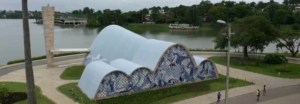
Saint Francis of Assisi Church, Belo Horizonte
The highlight of the show is Brasília. In 1956, the city was born from nothing, like a dream grown on the burning savannah. The president Kubitschekformer mayor of Belo Horizonte, hands him the keys to the future capital, in the middle of the desert, and says: "Oscar, make us a city! And then he lets loose. The guy lays out futuristic buildings as if they were knitted fabric. Cathedrals, convention centers, you name it, concrete that flies and makes you dream. But it's not just buildings, it's the symbol of a Brazil looking to the future, far from the colonial coast, far from Europe.
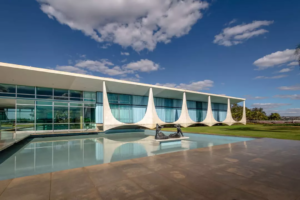
Palace of Dawn, Brasília
But all this was not without a few hiccups. Workers toiling under difficult conditions, with working days reaching 18 hours, banned unions, police intervention, heavy repression and sometimes recalcitrant workers shot at point-blank range while the elites sip cocktails in their new offices, it all looks a bit out of place. Designed to accommodate 500,000 inhabitants, Brasília is now home to 2.7 million of them. Only the wealthy classes live in superquadras imagined by Costa (author of the pilot plan). "Brasília went from being a socialist city to the very image of social difference. "will write Umberto Eco. Communist sympathizer, Niemeyer quickly realized the extent of this disillusionment: "I've worked for the rich and powerful. That's all there is to it. "he lamented in 1965.

Brasília Cathedral
NiemeyerHe wasn't just good at designing buildings, he was a true red. He joined the Communist Party in 1945, and never left. And he wasn't kidding about that. When he was asked to design the PCF headquarters in France, he did it for free, out of conviction.
His buildings were a salute to Europe and its rigid modernism. He said that Brazil had nothing to learn from Europeans, that his curves were pure Brazil, a concrete landscape.
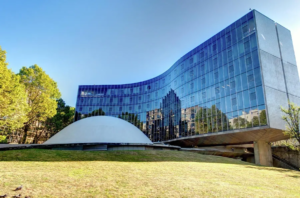
French Communist Party headquarters
Then came the military coup in 1964. Niemeyerwith his PCF badge, chose "voluntary exile". The press was crazy about these buildings and the general public appreciated them. Jean-Paul Belmondo in a white tuxedo in The Man from Rio (1964), filmed by De Broca in the middle of this brand-new Brazilian capital. Niemeyer said that the military had "unintentionally done him a great service", as his exile had enabled him to promote his architecture and the progress of Brazilian engineering internationally.
In France, Oscar was not idle, as he completed several major projects during his exile, mainly between 1965 and 1981: the maison de la culture du Havrenicknamed "The Volcano", the Bobigny departmental labor exchangethe L'Humanité headquarters in Saint-Denisthe Villa Nara Mondadori in Saint-Jean-Cap-FerratMulti-family housing in Grasse, Dieppe and Villejuif, project for Renault in Boulogne-Billancourt.

Villa Nara Mondadori
Oscar NiemeyerI guess he hated retirement. In 1985, the old lion returned to the fold after 21 years of exile in France. Far from hanging up his plans, he went straight to work on major projects, as if he had twenty years of catching up to do. In 1988 he received the Pritzker Prize for his body of work. The jury underlined his significant contribution to modern architecture, in particular his work at Brasília.
Between 1991 and 1996, he released Niterói Museum of Contemporary Art. Then, in 2003, he did it again with theSão Paulo auditoriuminaugurated in 2005. A 27,000 m² undulating roof, no less. But the BrazilBut that's not all. The man continues to build abroad: international cultural center in Spainmonuments for Chavez in Venezuelaand even a concrete wink to his buddy Fidel in Cuba. The guy is everywhere, tireless. The guy becomes a living legend. One day, someone asks him the secret of his longevity, and he blurts out with a smile: "Work and drink good red wine!"
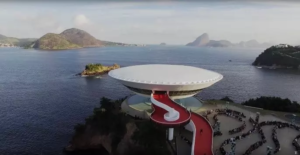
Niteroi Museum of Contemporary Art, Rio de Janeiro
November 16, 2006, aged 98, Niemeyer married his secretary for the second time, Vera Lucia Cabreiraaged 60 This late marriage is like a final bold stroke on the canvas of his life. His marriage to Annita lasted 76 years, until her death in 2004.
Niemeyer died in 2012, just a few days shy of his 105th birthday. Fidel Castro was right: "There are only two Communists left in the world, me and Oscar." But Niemeyerhe wasn't just a communist. He was a poet of concrete. And if his works, like Brasíliaare sometimes accused of being cold and distant from people, the fact remains that Niemeyer dreamed bigger than others. And he left us these monuments and ideas, so that we too can look beyond the horizon.
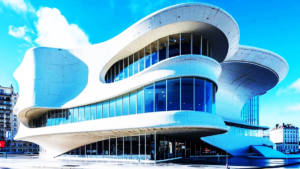
Maison de la culture, Le havre
Find out more:
https://fr.wikipedia.org/wiki/Oscar_Niemeyer
https://www.decitre.fr/livres/les-courbes-du-temps-9782070751822.html
https://www.architectmagazine.com/practice/oscar-niemeyer-man-of-the-people_o?o=1
https://patrimoine.seinesaintdenis.fr/IMG/pdf/dossier_de_presse_niemeyer.pdf
https://www.parismatch.com/Culture/Art/Ma-rencontre-avec-Oscar-Niemeyer-le-genie-des-courbes-158951

